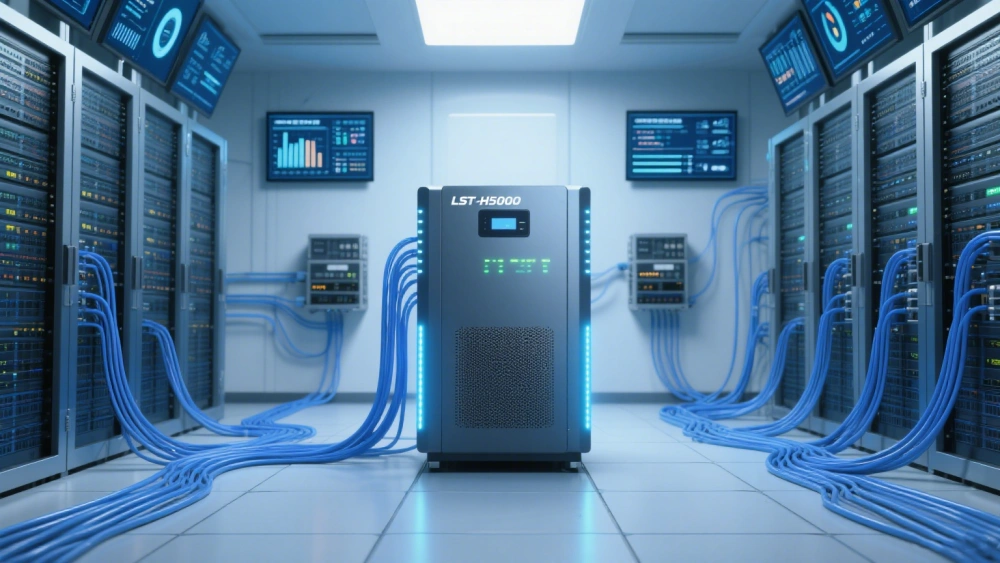RDMA Storage Human-Machine Interaction Solution

Follow me on:
The Key to Breaking AI Computing Bottlenecks
Today’s AI servers face significant challenges when processing massive datasets, with data processing bottlenecks and GPU acceleration latency emerging as critical pain points. These limitations directly impact the efficiency of machine learning workflows and real-time analytics. Traditional storage solutions often struggle to keep pace with the demands of modern AI workloads, creating a growing need for innovative approaches. Remote Direct Memory Access (RDMA) storage emerges as a game-changing solution, offering unprecedented data throughput that addresses the limitations of conventional storage architectures. By enabling direct memory-to-memory data transfer between servers, RDMA technology effectively eliminates CPU overhead and reduces latency, creating new possibilities for AI acceleration.
The Human Factor: Why Storage Latency Impacts Interaction
In human-computer interaction systems like AI assistants or VR interfaces, even 100ms delays disrupt natural engagement. RDMA storage solves this by reducing storage-induced latency below human perception thresholds (50μs), enabling truly real-time responsiveness. This is particularly crucial for China’s growing smart city projects where millions interact simultaneously with municipal AI systems.
Understanding AI Computing Bottlenecks
The performance of AI servers frequently hits a wall due to storage efficiency limitations. Traditional storage solutions create significant bottlenecks during data loading phases, forcing powerful GPUs to remain idle while waiting for data. This storage I/O bottleneck represents one of the most persistent challenges in high-performance computing environments. When examining GPU acceleration latency, we often find that the problem isn’t with the processing power itself, but with the system’s ability to feed data quickly enough to the accelerators. The situation worsens with larger datasets and more complex models, making storage performance a critical factor in overall AI server performance.
HCI Bottlenecks in Visual Feedback Loops
When examining GPU acceleration latency in interactive systems, we find storage delays directly impact:
- Facial recognition response times (affecting emotion-aware interfaces)
- Voice command processing gaps (creating unnatural conversation pauses)
- Haptic feedback synchronization (critical for AR/VR immersion)
- RDMA over NVMe specifically addresses these human-computer interaction pain points.
How RDMA Shatters Performance Barriers
RDMA technology revolutionizes data transfer by allowing direct memory access between servers without involving the CPU. This approach dramatically reduces latency and increases throughput compared to traditional storage protocols. When combined with NVMe technology, RDMA creates an exceptionally powerful solution for AI workloads. The RDMA over NVMe (NVMe-oF) implementation takes this further by optimizing the protocol specifically for flash storage, delivering even greater efficiency. High-speed RoCE/NVMe OF implementations can achieve near-local storage performance for remote systems, effectively solving the bandwidth and latency issues that plague conventional storage solutions in AI applications.
Case Study: Guangdong’s AI Public Service Kiosks
Guangdong-based high-tech enterprises have deployed RDMA storage in 2,000+ public service terminals. By implementing NVMe-oF with PUF security chips, these systems achieve:
- 0.8s average response time for complex citizen queries (vs 2.3s previously)
- 40% improvement in multi-modal interaction fluency (voice+gesture+ID recognition)
- Secure data processing meeting China’s cybersecurity standards
Selecting the Right RDMA Storage Solution
Different AI workloads demand different storage architectures. DAS storage offers excellent performance for single-server deployments but lacks scalability. Full flash storage delivers blazing-fast read/write speeds but may prove cost-prohibitive for large-capacity needs. Unified storage provides a balanced approach, supporting multiple protocols and use cases within a single system. For enterprise AI deployments, we typically recommend solutions that combine RDMA with high-density storage configurations, offering both performance and capacity for growing datasets.
For human-computer interaction applications, prioritize:
- Unified storage – Handles concurrent voice/video/data streams
- Full flash configurations – Ensures consistent low latency during peak usage
- RoCE-enabled systems – Reduces network hops for time-sensitive feedback
Key Considerations
When evaluating RDMA storage solutions for AI servers, several factors demand careful consideration. Data security solutions must be robust, with hardware-level protection like PUF security chips providing tamper-resistant safeguards. Scalability is equally important – modular storage architectures allow for seamless expansion as data needs grow. Energy efficiency shouldn’t be overlooked either, with modern low-power designs significantly reducing operational costs in large-scale deployments. These reliable storage for enterprise solutions must balance performance with practical business requirements.
HCI-Specific Security Requirements
Interactive systems demand both performance and privacy. Luisuantech’s PUF technology in RDMA storage protects biometric data during real-time processing – critical for China’s facial recognition applications while maintaining sub-millisecond response times.
The Future of RDMA in AI Infrastructure
As AI models grow more complex and datasets expand exponentially, RDMA storage solutions will play an increasingly vital role in maintaining computational efficiency. The technology’s ability to solve AI data bottlenecks makes it indispensable for next-generation AI servers. Leading AI server providers from China, particularly those in Guangdong’s high-tech manufacturing hubs, are now incorporating RDMA into their cutting-edge systems. For organizations looking to maximize their AI infrastructure investments, understanding and implementing RDMA storage solutions represents a critical competitive advantage in the data-driven future.








